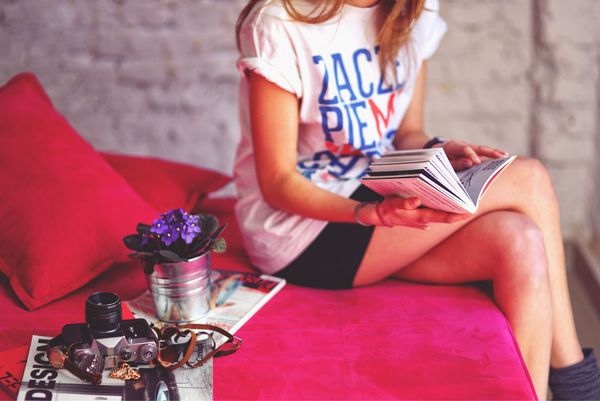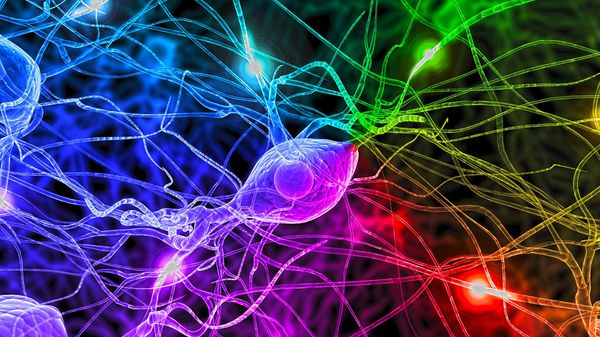Jon Brooks • • 10 min read
How To Design The Perfect Morning Routine

Harvard’s Positive Psychology Professor, Tal Ben-Shahar, believes happiness is the result of balancing meaning with pleasure.
But understanding what gives us meaning and what gives us pleasure is not as easy as it sounds.
In this article, I will teach you how to track everything you do, then restructure your activities in the optimal way. This is the only way to end procrastination and develop the right habits, like meditation, exercise and learning, so you will grow everyday.
You will learn how to work diligently on that which gives you meaning and reward yourself accordingly with pleasure. In this way your habits will truly stick and fundamental changes in day to day lived experience will be possible.
Work, for example, is thought of by most people as boring and tedious but psychologists Mihaly Csikszentmihalyi and Judith LeFevre show otherwise.
In their article, Optimal Experience in Work and Leisure [PDF], they show that while people say they prefer leisure over work, actually, they have more ‘flow’ and ‘peak experiences’ at work.
This has since come to be known as the work paradox.
What I’m going to show you in this article is not just how to design your perfect morning routine, but how to actually live it both productively and happily.
But before we can arrive at our destination of the perfect morning routine we need a map to get us there.
Read: 26 Scientifically Proven Superhuman Benefits of Meditation
aTime Logger 2
The first step in designing our perfect morning routine is to look at our existing one. I want you to track all your activities for a whole week. Don’t get OCD with this and decide you’re going to do it forever. You’re not a machine.
I track my food intake, my workouts, my meditation and my reading progress everyday. But to track your transport, the time you spend gaming, watching TV, surfing the web (ahem), eating and everything in-between isn’t just unsustainable, it’s pointless.
You’d be tracking so much you’d have to figure out how to track the time you spend tracking and that just makes my head hurt…
There are two ways of tracking you morning routines. The first is with a watch, a pen and pad but that’s old school.
I prefer to use an actual time tracker app on my phone. I’ve used many over the years but my favourite, by far, is aTime Logger 2 [there’s a free version]. It’s got everything you need and it’s super easy to use (the photos are of the app).
All you have to do is create a list of activities you engage in on a regular basis. When the time comes to doing the activity, like reading of watching TV, just activate it before you begin and deactivate it when you finish.
What’s also cool about the app is that it also has a goal functionality so you can allocate set amounts of time you want to spend on each activity. For now though, just track your REGULAR week.
We don’t want to spend too much time analysing our days here. We first design our perfect week, then reverse engineer our perfect day based on averages. The problem most people fall into when they try designing their perfect daily routine is that they forget that not all days in the week will look the same.
When fitting socialising into your routine where does it go? Morning? Evening? If you’re like me, neither. I’m too busy (introverted) to socialise every day so I make up for it by dedicating 10 hours to it once a week.
We call this a happiness booster — part of our life’s routine but not our daily routine.
The Meaning Map
Once you’ve tracked your week, you need to view the percentages. If you use aTime Logger 2 you can switch to ‘week view’ and click the ‘details’ button.
Now, get a notepad and pen and write a list of all the activities you took part in during the week. Then, sort them by meaning.
Next to the activities you find meaningful on that list place a ‘+’ symbol. Next to the actives you find the most meaningful to your life’s purpose place ‘++’.
Repeat the process for activities you don’t find meaningful. Place a ‘-‘ next to those that don’t provide much meaning and a ‘- -‘ next to the actives that you deem a waste of time.
You’ll probably see that the time you spend on each activity doesn’t correlate with the meaning it you gave it. Perhaps you gave watching soap operas a ‘- -‘ yet spent more time on them than writing your ‘++’ novel.
The point of the meaning map is simply to gain inner perspective on what matters, what doesn’t, and whether or not you’ve been living your life in accordance with your ideals.
Imagine you were a coach for someone identical to yourself. What advice would you give them after analysing their meaning map?
Creating The Perfect Morning Routine
I wasn’t being totally honest with the title of this post. I can’t show you how to make a perfect routine because, well, life isn’t perfect. Some days things come up and that’s just the way it is. What then? Give up on our routine and start tomorrow? We know how that works out…
We need to strive for excellence, not perfection.
If you’ve ever tried to follow a perfect morning routine in the past and failed after a couple of days that’s probably because you didn’t place enough emphasis on two key components of any successful morning routine: flexibility and ritualisation.
Searching for perfection is a waste of time. What we need is to understand the principles of a perfect morning routine/diet/training programme so we can create the best we can with the tools we have.
Read this article on hierarchies for an alternative to the 80/20 rule.
In their book The Power of Full Engagement, Jim Loehr and Tony Schwartz show an alternative to the ‘self-discipline’ paradigm: ritualisation. While rituals are difficult to introduce, they are often easy to maintain.
In the creation of our perfect morning routine we need to find rituals and systematically employ them to best suit their context. Watching television or playing a video game all day is obviously unproductive. But as a ritualised recovery or a reward, such pastimes can improve productivity.
Everyone will have different meanings for different activities but as a general rule of thumb, all activities fall into four categories: biological needs, meaning, rewards, and happiness boosters.
To create your optimal daily routine you’ll need to figure out what goes where.
I’ll give you a run down of each category and provide an example for each.
1. Biological Needs (Layer 1)
We are animals and we have needs that are neither meaningful nor pleasurable, but needs none the less. Examples include:
- Sleeping
- Showering
- Brushing teeth
- Flossing
- Eating
These biological needs will act as the glue that holds your daily routine together. The reason? You’ll do them every day, regardless what else you get up too. That said, different people may categorise these biological needs differently and that’s fine.
If you love showering, you can use it as a reward. If you love having a long lie-in you can use sleep as a happiness booster. If you’re bodybuilder, sleeping and eating might have more meaning to you. Figure what your biological needs are and what other categories they share.
I lift weighs so I need 8-10 hours sleep each night and multiple showers each day. I also view meditation as a form of mental hygiene — something that has to be done. I don’t judge these rituals, I don’t care how much time they consume. They are my needs and the things everything else is built around.
I’m self-employed and my work comes into the ‘meaning’ category. If you have a job you don’t find meaningful but you need to work there to pay the bills, your job will be a biological need.
2. Meaning (Layer 2)
From here on, the layers of your daily routine are optional, unlike your biological needs.
This is where the meaning map we made earlier comes in. Remember those activities you placed a ‘++’ next to? You need to rank each one in order of importance. This way, if you’re ever pushed for time, you’ll know exactly which activity to pursue first.
The rituals in this category typically have the most long-term benefit and cover things like working on your business, reading, creating art, exercising, and so on. Again, there are no set activities. You decide.
Buddhists might place meditation in this area. A model might place grooming in this section. A film student might place watching films in this section. A new mother, her baby. What one-person views as a reward, a need or a happiness booster, another might see as a life’s purpose.
And you don’t need to get all philosophical. Maybe you feel your meaning is to change the world, connect to others and achieve enlightenment. That’s dandy but I can’t see any rituals in that list. We are working with concrete actions here.
My meaning hierarchy is:
- Work on my business
- Pursue knowledge (study/read/absorb)
- Create art
Create your own meaning hierarchy but don’t let the list get too big. 2-6 is enough. 3, in my opinion, ideal.
3. Reward/Pleasure (Layer 3)
Ritualised recoveries lead to more overall happiness and productivity. The people who tell you to spend every minute of every hour working on your goals are misinformed. There is absolutely nothing wrong with watching TV, playing video games and going on Facebook. The problem with these pastimes is how and when we do them.
As a general rule, no pleasurable activity should be unearned. When we reward ourselves after unproductive behaviour we reinforce that behaviour as positive.
Moreover, we also enjoy our pleasurable activities more if we work for them. When you work everyday and get a week off it’s extremely pleasurable. The unemployed don’t experience this euphoria on their days off.
You can set yourself your own ratios of meaningful activity-to-reward. I like the ratio of 3:1. Work for 3 hours and get an hour reward, work for 90 minutes and get 30 minutes. It’s important that you enforce the reward/pleasure aspect of your daily routine on yourself. It won’t be easy at first but it’s worth spending the effort implementing.
My current rewards are watching an episode of The Walking Dead, browsing the web, watching YouTube videos and making a cup of Yerba mate tea (it helps with creativity).
If you decide to combine biological needs like eating and going to the toilet with rewards/pleasure, know that the biological need is cancelled. If you watch an hour-long TV episode while eating a bowl of cereal you’re actually rewarding yourself for nothing… unless it comes after a meaningful/productive activity.
4. Happiness Boosters (Layer 4)
Happiness boosters are activities like going to the cinema, a nightclub, a friends house, a restaurant or just staying home and watching 5 episodes of Breaking Bad back to back with a tub of Ben and Jerrys.
Happiness boosters are not going to be part of your morning routine but they should definitely be part of your weekly routine. You don’t have to actually plan them out but getting at least one in each week is paramount to your happiness and productivity. Don’t neglect these.
Putting The Perfect Morning Routine To Practice
Because our biological needs are the most inflexible layers of our morning routines they will be the scaffolding that holds it together — specifically sleep. If you go to bed at a specific time and wake up at a specific time every day then your morning routine is going to be much more efficient.
If you know your sleeping times are going to be different because of work or other late night obligations, that’s fine, just make sure to prioritise your most meaningful activities.
This article, mainly, was intended to give you a new framework of designing a daily and morning routine. I’m obsessed with finding the routines of artists and trying to learn from them. But after years of studying them, I’ve come to the realisation that theoretical conceptions of your perfect morning routine rarely work out in the real world.
You have to design it, live it. Tweak it, live it. Fall off the routine, and get back on. You might be more productive at night, you might need only 4 hours sleep, you might be a party animal that gets up at 3.00PM. It doesn’t matter.
The best morning routines are highly individualistic.
What My Perfect Daily Routine Looks Like…
9.00AM – Wake Up/weigh myself/shower/brush teeth
9.45AM – Make a cup of Yerba mate tea and do a 25-minute guided meditation
10.15AM – Read 20-30 pages of a non-fiction book (I prefer pages over a set time)
11.00AM – Breakfast/pre-workout meal while watching TV/Youtube
11.45AM – Write for health magazine
1.45PM – Take pre-workout supplement/leave for gym
2.00PM – Train/listen to podcasts or music
3.30PM – Change/shower
3.45PM – Work on eCommerce business/listen to informative YouTube
8.00PM – Eat food/spend time with family
10.00PM – Create art/listen to music
12.00AM – Floss/brush teeth/gratitude journal
12.10AM – Read Fiction
1.00AM – Sleep
That’s my perfect daily routine. But it’s not my actual routine. If this was my actual routine I’d be reading in bed right now, but instead I’m on my computer writing this article.
I don’t go to the gym every day. I attend life-drawing classes in the week and go out some evenings for a happiness boost. I said at the start of this article happiness is the balance of meaning and pleasure. Overly restricted daily routines are like uncompromising diet plans — they lead to disorders, which leads to depression which leads to having a terrible life.
Just keep these principles in mind when you’re thinking about your own daily routine and you’ll have everything you need…
Design it, live it, tweak it. Repeat.
The Key Principles for The Perfect Morning Routine
- Track your existing routine to see areas to improve.
- Design your perfect week then reverse engineer your perfect daily routine.
- Create a meaning map as a guide for when your days feel lost.
- Perfection is an ideal, not the goal. Life is messy, strive for excellence.
- Rituals always beat self-discipline.
- Pleasure is a reward. Rewarding yourself for being lazy reinforces laziness.
- Happiness is vital for productivity — throw in happiness boosters.
This post is republished with permission of the original author.
This original can be found at ComfortPit.com

Jon Brooks
Jon Brooks is a Stoicism teacher and, crucially, practitioner. His Stoic meditations have accumulated thousands of listens, and he has created his own Stoic training program for modern-day Stoics.










